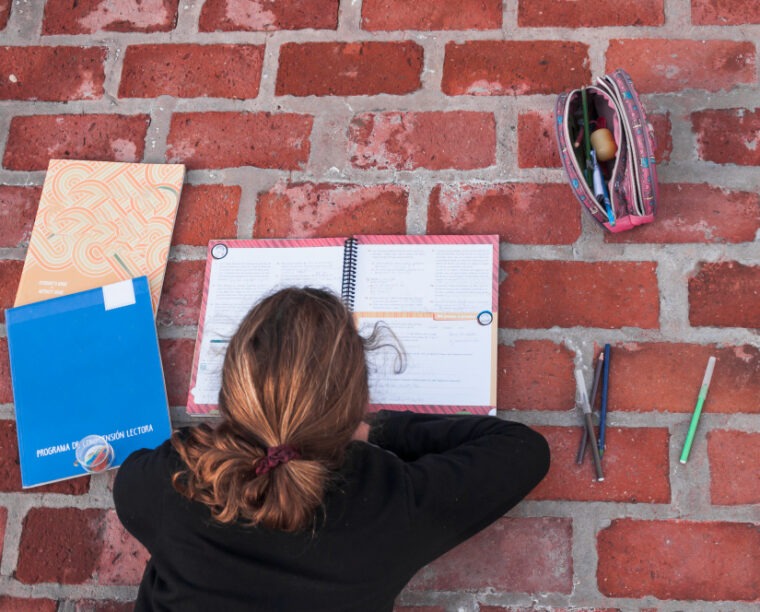
Changing schools is one of those moments in life that can cause stress for both children and their parents. Sometimes, however, change becomes inevitable: a family moves to a new place, a child’s needs evolve, or it becomes clear that the current educational environment is no longer the best fit. If you are considering changing schools, here are some tips to help navigate this important transition.
When should you consider changing the school?
Changing schools is a significant step, so it is worth considering if:
Your child is constantly anxious about school and does not want to attend.
You notice that the school’s curriculum, values, or environment do not align with your child’s personality or learning style.
Your child is repeatedly bullied or socially isolated.
Your family is moving, and the journey to the current school is impractical or too difficult.
You would like your child to receive more individual attention or benefit from more advanced teaching methods.
When making this decision, it is essential to consider the broader context. The choice should not be based solely on disappointing grades or temporary difficulties, but on the child’s overall emotional well-being and attitude towards learning. Sometimes, changing schools can provide a fresh start, renewed motivation, and new opportunities—but it should not be the first solution to challenges.
Changing the school – where to start?
The best place to start is with an open conversation with your child. Listen carefully to their thoughts, and try to understand their fears and expectations. If the change is prompted by difficulties your child is experiencing, it can be helpful to talk to their current teachers. They can offer valuable insights and help you assess the situation more objectively.
Choosing a new school should consider more than just the location or expected academic results. Pay attention to the school’s values, the atmosphere of the community, and how the child will be treated as a unique individual. We recommend visiting several schools, talking to teachers, and familiarising yourself with the curriculum, daily routines, and overall educational philosophy.
Finally, ensure all the necessary documents are prepared, but even more importantly, focus on your child’s emotional readiness. To support a smooth transition, discuss their new daily routine, potential friends, and future teachers in advance. It is important for children to understand that changing schools is not an escape from past challenges, but a positive step towards a new beginning.
Making the final decision
Changing schools is not merely a transition to a new academic environment—it is primarily an emotional decision that requires careful preparation, time, and sensitivity. It is important for parents to trust their intuition while also gathering as much information as possible. Speaking with parents of children already attending the school can be particularly helpful, as their experience provides insight into the day-to-day life of the school.
However, adult opinions alone are not enough. Even young children have their own perspectives, intuition, and feelings, which often give the first indication of whether a new school is the right fit. If something is worrying your child but they cannot express it in words, pay close attention to their body language and emotions—they can be more revealing than words. By involving your child in the decision-making process, you show that you value them as a person, while also gaining valuable information to guide your choice.
How does your child feel about changing schools?
Changing schools can be challenging for a child’s sense of identity and security. Leaving familiar surroundings and friends behind may make them feel lost, scared, or sad. At the same time, it can be a source of curiosity and excitement—an opportunity to see themselves in a new light, make new friends, and try new experiences.
The most important thing is not to impose your own fears or expectations on your child. Allow them to express how they feel and frame the upcoming change as an adventure, knowing that you will always be there to support them. Maintaining stable daily routines and providing a clear understanding of when, where, and how the new stage will begin can make the change much smoother
How can the new school support your child?
Every educational institution can play a key role in making a child’s admission and integration into the school community as smooth as possible. At Saulės Gojus, newcomers are welcomed warmly and supported throughout the process. Children are not simply “thrown” into a new environment—they are introduced gradually to their classmates, teachers, and school premises. Teachers closely monitor each child’s adaptation and keep parents informed, inviting them to meetings if necessary.
During the first few weeks, the focus is not on academic achievement, but on the child’s well-being. This integration period allows the child not only to get used to the new environment, but also to overcome shyness and regain confidence in being themselves. A supportive community, positive relationships with teachers, and individual attention all help create a safe space for adaptation.
Why choose Saulės Gojus as your new school?
When changing schools, parents often look for “something more”: greater personal attention, more meaningful human interaction, and opportunities for children to grow at their own pace and according to their individual nature. Saulės Gojus is a long-term school that maintains consistent values from nursery through the highest grades. It encourages academic progress while also developing emotional literacy, creativity, and independence.
The school community is particularly attentive to new children: they are quickly involved in activities, encouraged to share their experiences, and supported in gaining self-confidence. If parents have concerns or questions, teachers and administrators are always ready to respond, provide guidance, and offer additional support.
Supporting your child after the school change
Deciding to change schools and preparing for it requires considerable attention, but it is important to remember that the mere change of school is only the beginning. The most crucial work starts once your child begins attending the new school. During this period, they need extra attention, patience, and support—both at school and at home.
The first few weeks may be exciting, but it is natural for doubts or feelings of longing for the previous environment to arise later. Encourage your child to express their emotions, and maintain open communication with their teachers. At Saulės Gojus, collaboration between families and educators is not a formality but a necessity: regular communication helps address potential challenges before they become problems.


